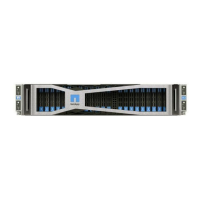• NetApp HCI Resources page
Rancher on NetApp HCI concepts
Learn basic concepts related to Rancher on NetApp HCI.
• Rancher server or Control plane: The Rancher control plane, sometimes called the Rancher Server,
provisions, manages, and monitors Kubernetes clusters used by Development and Operations teams.
• Catalogs: Catalogs are GitHub repositories or Helm Chart repositories filled with applications that are
ready-made for deployment. Rancher provides the ability to use a catalog of Helm charts that make it easy
to deploy applications repeatedly. Rancher includes two types of catalogs: built-in global catalogs and
custom catalogs. Trident is deployed as a catalog. See Rancher documentation about catalogs.
• Management cluster: Rancher on NetApp HCI deploys three virtual machines on the Rancher
management cluster, which you can see using Rancher, Hybrid Cloud Control, and the vCenter Plug-in.
The management cluster virtual machines host the Rancher server, the Rancher Kubernetes Engine
(RKE), and the Linux OS.
• User clusters: These downstream Kubernetes clusters run your apps and services. In Kubernetes
installations of Rancher, the management cluster should be separate from the user clusters. Any cluster
that a Rancher user deploys from Rancher, or imports into Rancher, is considered a user cluster.
• Rancher node template: Hybrid Cloud Control uses a Rancher node template to make deployment
simpler.
See Rancher documentation about node templates.
Trident software and persistent storage concepts
Trident, itself a Kubernetes-native application, runs directly within a Kubernetes cluster. With Trident,
Kubernetes users (such as developers, data scientists, and Kubernetes administrators) can create, manage,
and interact with persistent storage volumes in the standard Kubernetes format that they are already familiar
with. With Trident, NetApp solutions can meet persistent volume claims that are made by Kubernetes clusters.
With Rancher, you can use a persistent volume, one that exists independently of any specific pod and with its
own lifetime. Using Trident to manage persistent volume claims (PVCs) insulates the developers creating pods
from the lower-level implementation details of the storage that they are accessing.
When a containerized application issues a persistent volume claim (PVC) request, Trident dynamically
provisions storage per the parameters requested against the NetApp Element software storage layer in NetApp
HCI.
A Trident catalog is available to Rancher on NetApp HCI and runs in the user clusters. As part of the Rancher
on NetApp HCI implementation, a Trident installer is available in the Rancher catalog by default. Inclusion of
this catalog simplifies the Trident deployment to user clusters.
See Install Trident with Rancher on NetApp HCI.
For details, visit the Trident documentation.
Find more information
• Rancher documentation about architecture

